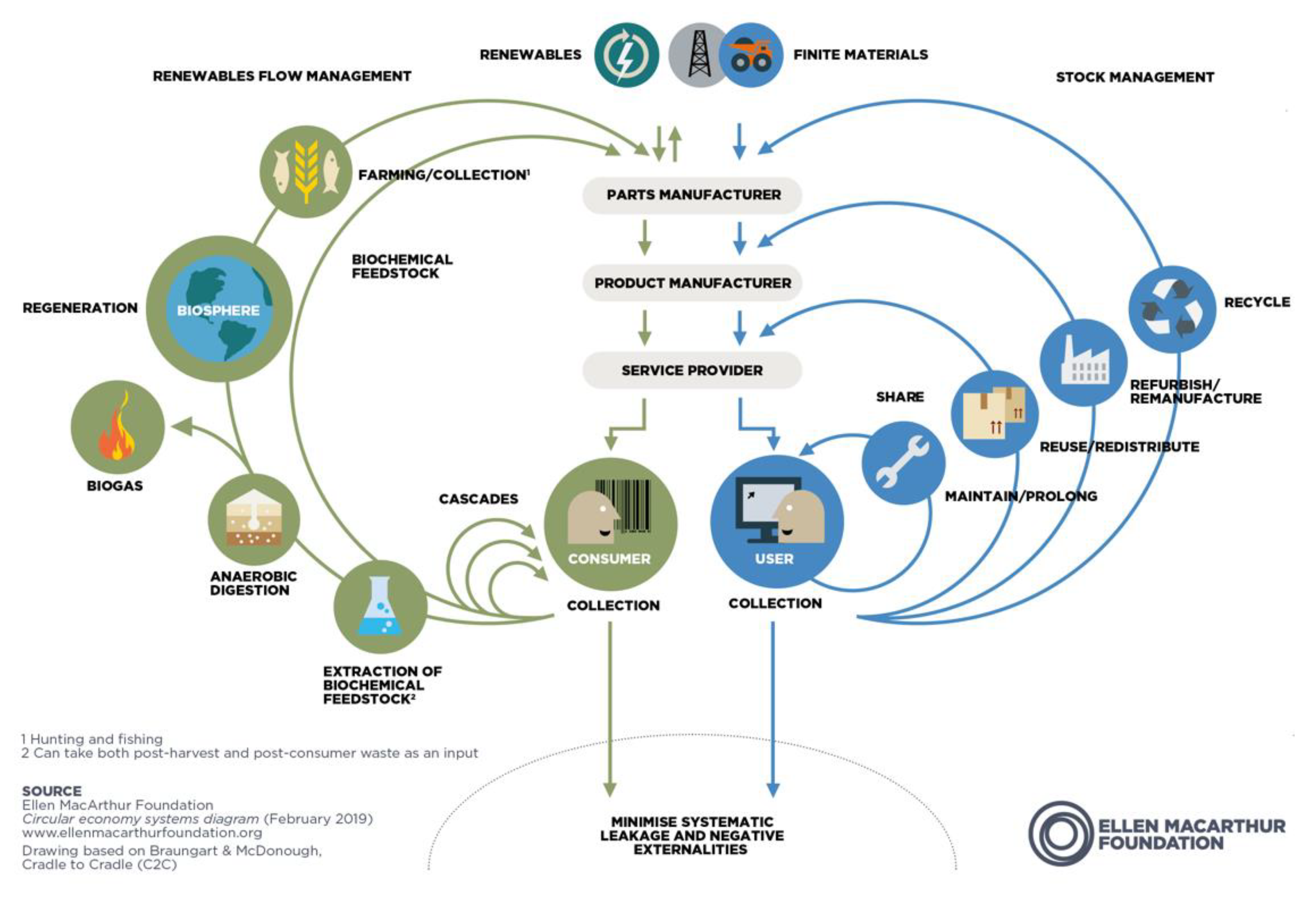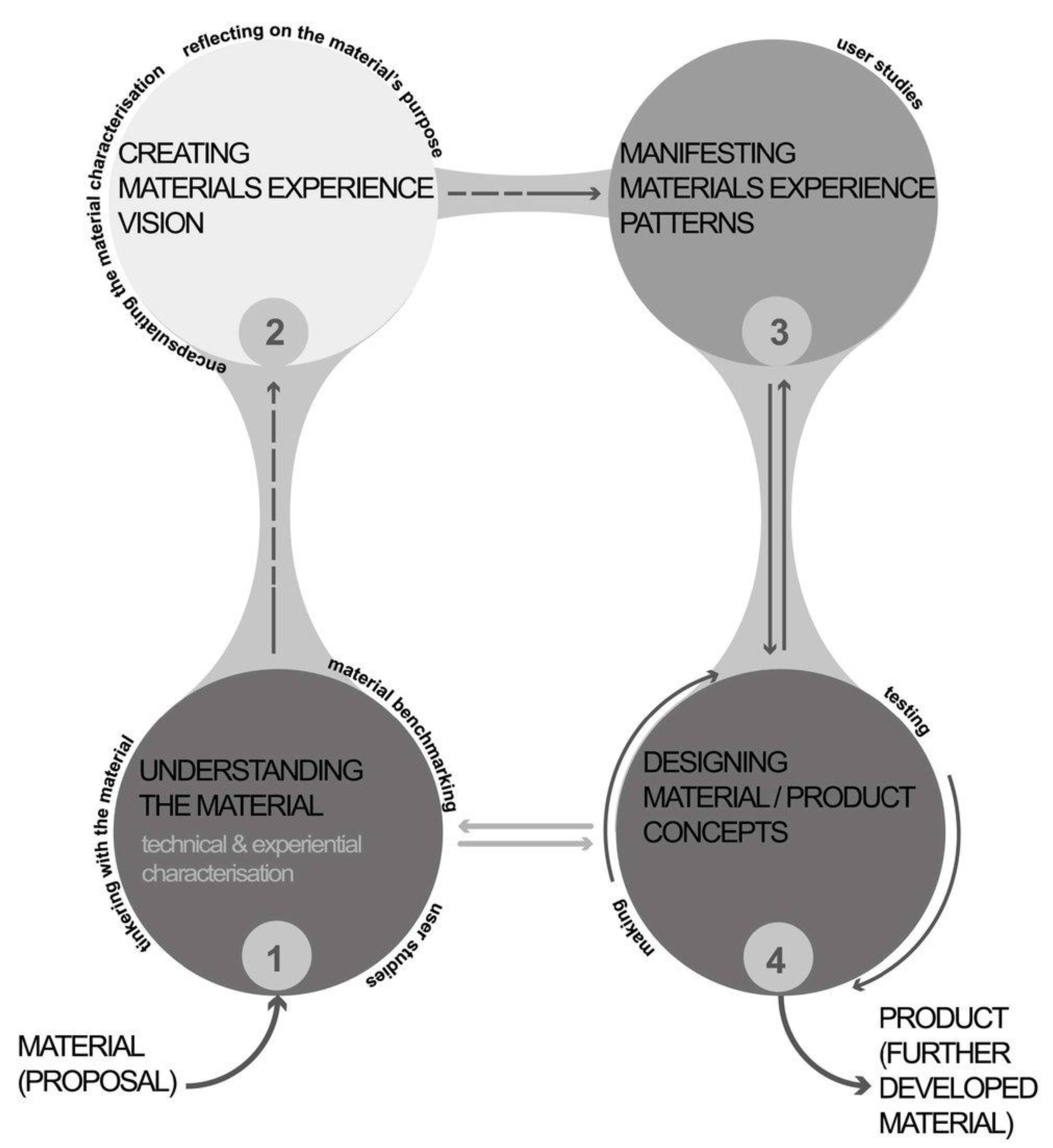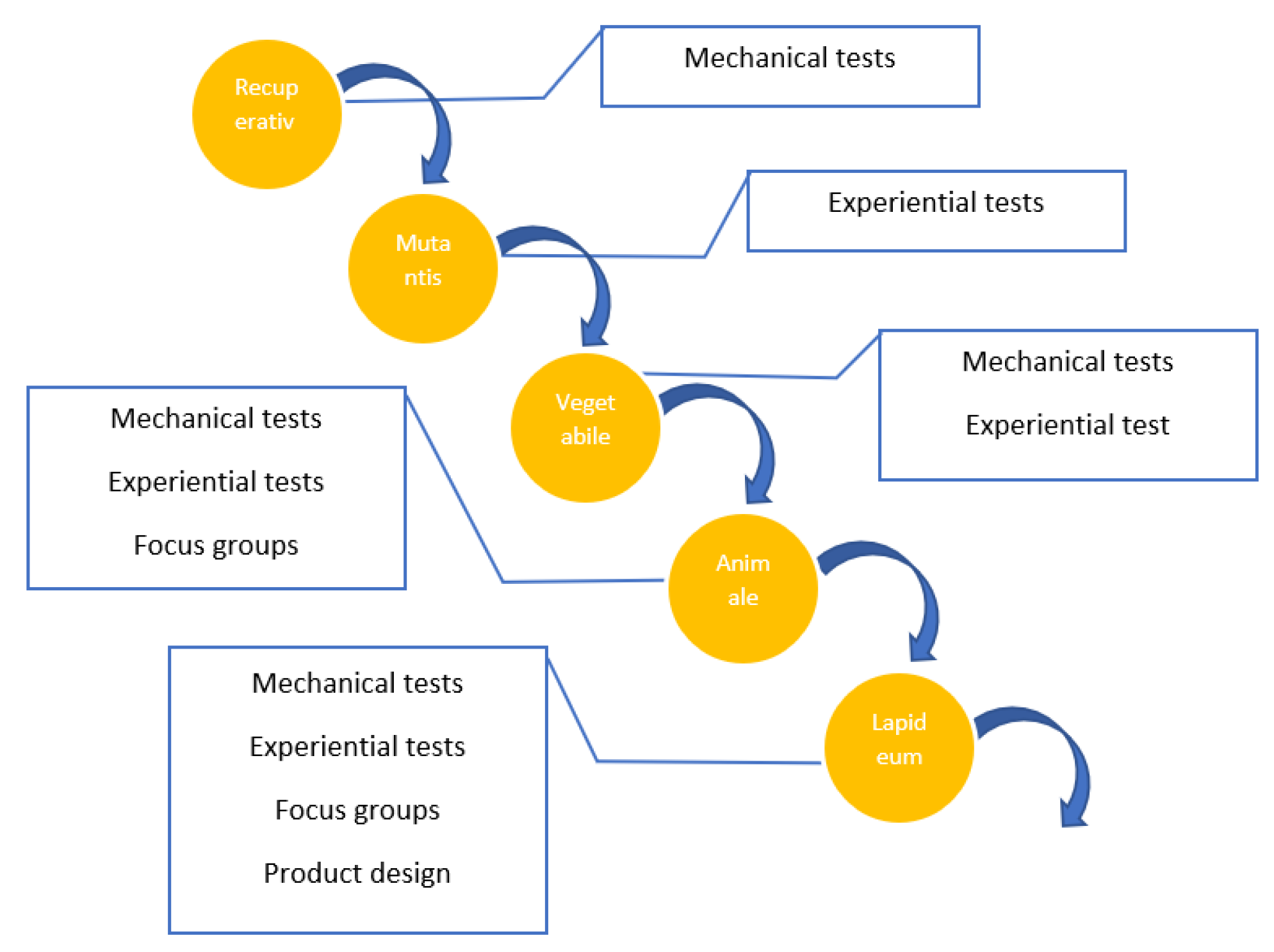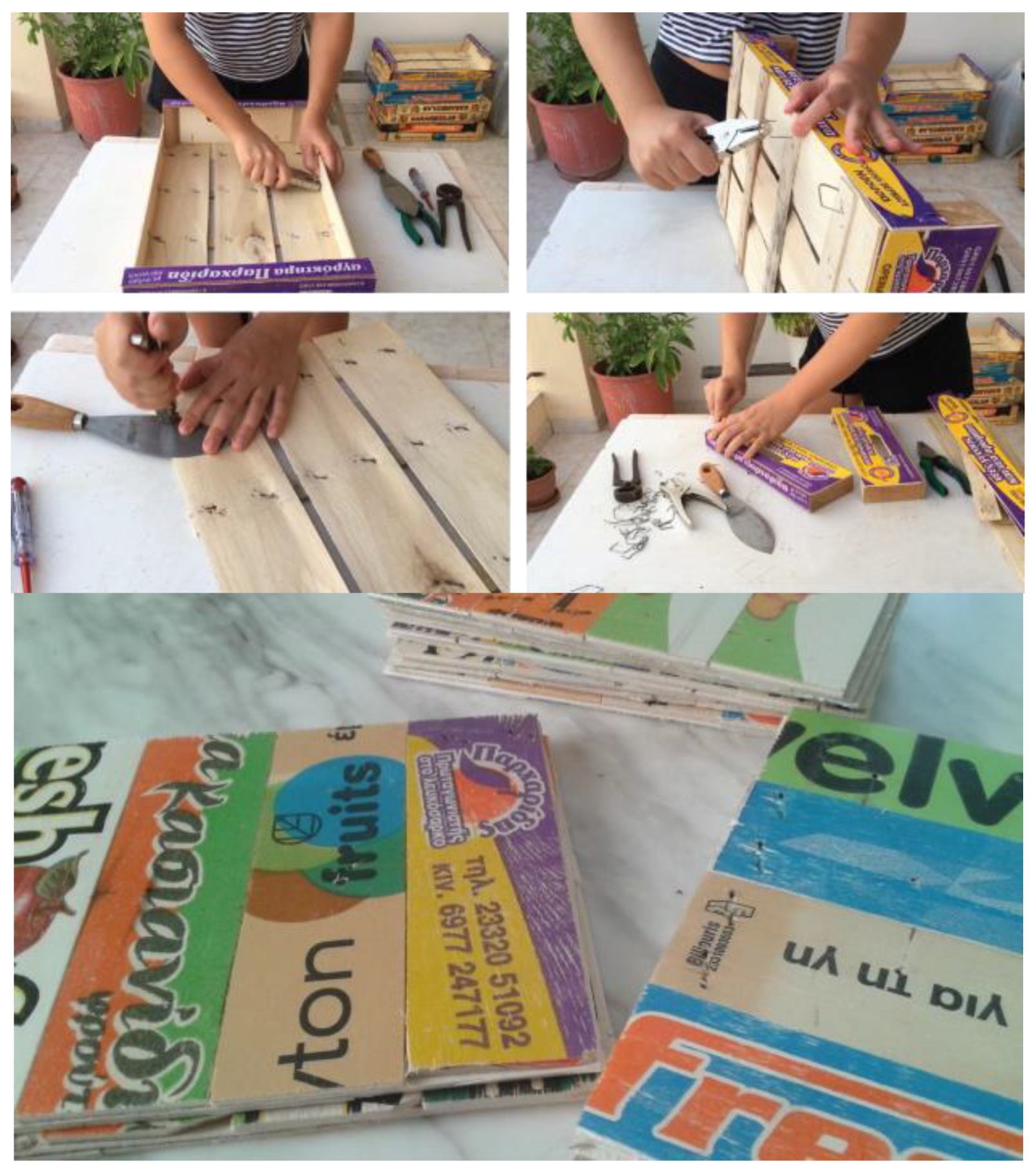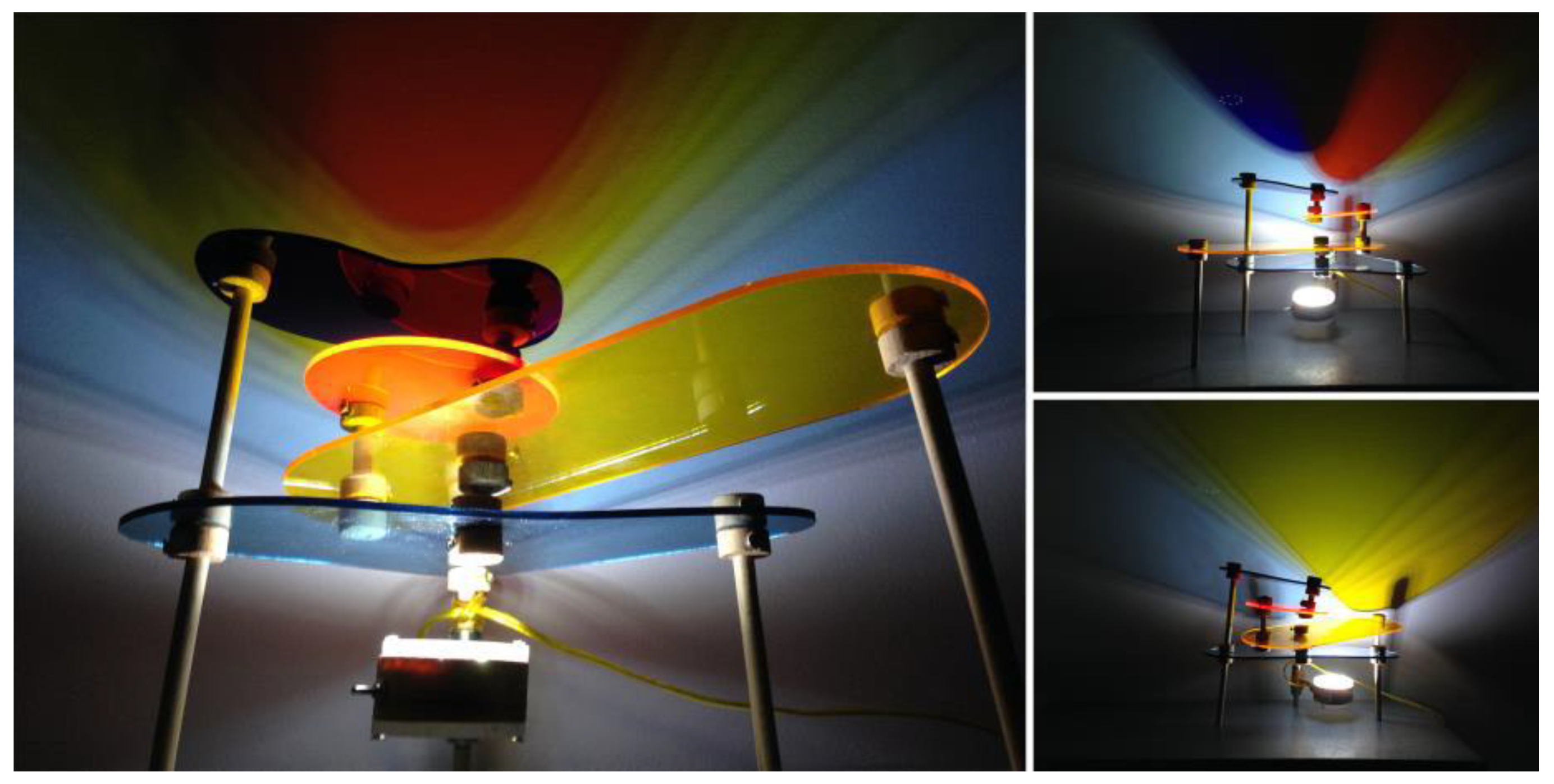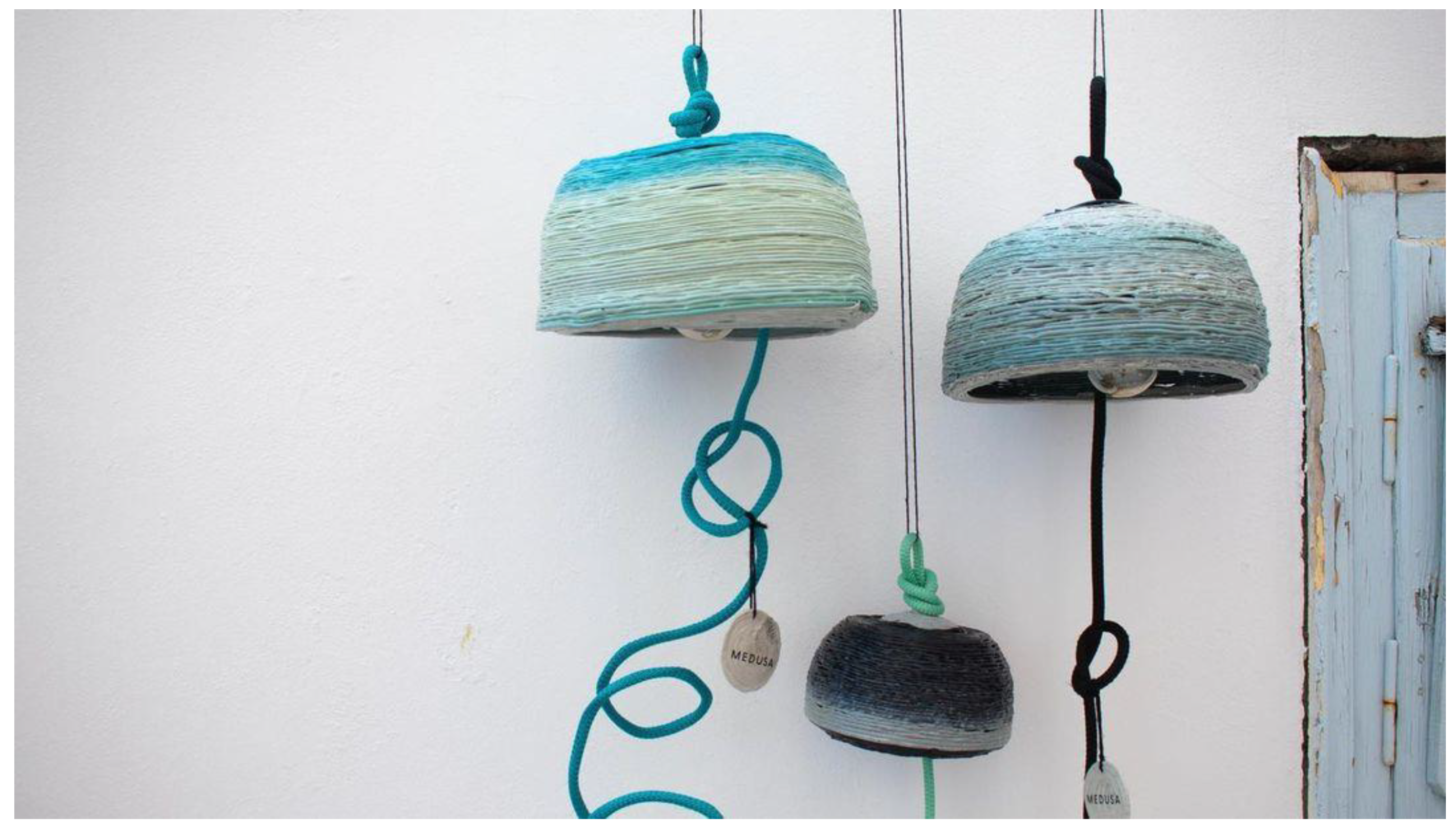1. Introduction
Since the industrial revolution, humanity has adopted a utilitarian view of the environment, seeing it as a means of economic growth, a provider of infinite resources and an endless space for discarding our waste. Products have become part of a throwaway culture, creating waste at every step of their lifecycle, from the acquisition of virgin materials to production and disposal. This throwaway culture and planned obsolescence [
1] have created mountains of trash that poison our air, ground, and waterways, putting the existence of life on the planet in danger. The fallacy of exponential growth on a finite planet has led to the emergence of sustainability as an answer to the interconnected and wicked problems we are facing today. Seeing how the rise of the Anthropocene has created existential threats to the survival of humans on Earth, the Paris accords were adopted as a means to curb rising temperature to less than two degrees Celsius. In short, we need to reconsider the way we do things every ten years for a chance to have a future. The difficulty of each transition towards a carbon neutral system is exponentially harder than the previous one [
2].
In addition to environmental management, consumption patterns also must shift. Products and the materials they are made from make up a considerable part of the problem. The European Union has adopted a strategy for transitioning towards a circular economy as a two-pronged approach that has the capacity to improve environmental conditions, increase resource efficiency and foster behavioral change towards sustainable lifestyles.
This paper presents an iterative research-through-design study of the upcycling systems design methodology. This methodology aims to identify existing waste streams in the local context and use existing methodologies to create DIY materials and products that decelerate the rate at which they end up in landfills. In the first section, a literature review of relevant approaches in waste management, design for sustainability and material design is presented. The insights from these methodologies are synthesized in a new design methodology. In the second section, the steps of the methodology and the rationale for the research-through-design approach are presented. The presentation of these steps is elaborated through five iterative applications of the methodology with a new layer being added in each one. The article closes with a discussion of the conclusions and a reflection on the next steps of the development of the methodology.
The central research contributions of this paper are twofold. Research-through-design as a designerly method of inquiry and scholarship is very promising in the context of design and sustainability. We believe that this way of developing theory and practice in tandem is relevant to the ill-defined and messy problems that are posed by the need to transition towards sustainability. The second level of contribution is the methodology per se and its application in a wide array of materials. The choice to adopt a wide scope instead of a deep one is based on the view that multidisciplinary creative research can act as a counterposition to the way modern science has been fragmented and specialized to the point that it cannot be applied in a practical way.
3. The Research through Design Project Development
To develop the process a research-through-design project was undertaken. We did not set out to go beyond feasible product concepts. Instead, we chose to focus on the mechanical and aesthetic qualities of the materials produced, on the craft processes and how they give new meaning to the making, and on communicating the values of sustainability through the narratives associated with it. In this section we briefly present and reflect on five DIY materials produced in the Department of Product and Systems Design Engineering with an array of different collaborators. We picked the material types based on the ‘five kingdoms of DIY materials’ [
14] as a means to iteratively validate the first steps of the methodology. In the following sections, the material, process, steps and reflection will be discussed.
3.1. Kingdom Recuperativ Upcycled Poplar Plywood
This material has been presented at length at the EKSIG 2017 conference [
27]. Wooden fruit crates needed for the experiment were collected from Syros’s central market where fruit stores throw them away. These wooden crates are usually produced by small-sized factories and are used for fruit distribution all over the country and disposed in a landfill after a single use. In the production, trees cultivated in Greece are used and the type of wood mostly chosen for the manufacture of fruit crates is poplar.
The crates were disassembled into veneer and reassembled into 3-ply and 5-ply plywood sheets, pictured in
Figure 5. Stress tests were undertaken to calculate their mechanical properties. The samples used for the stress tests were 11.5 cm by 1.5 cm, but the method allows for the creation of any size plywood sheet due to the overlapping of the pieces of veneer. These tests enabled us to be certain that the proof of concept of this material was valid and could be developed further. The material presented promising mechanical behavior given the raw materials’ origin and defects [
28]. At the same time, the choice of liquid hide glue, an adhesive that is compatible with the values of sustainability due to its natural non-toxic origin, created remarkable properties and made the material possible.
In this first iteration, we performed the initial scoping of the field to find a waste stream that could be leveraged to create a new material, the process of making a new material and the validation of the mechanical properties of the material. Additional research and tests were necessary to explore the aesthetic properties of the upcycled material. The branding of different producers created a colorful mosaic that communicated the narrative behind the material in a humble and sincere way. The next step undertaken would be the material experience tests and the prototyping of a piece of veneer furniture or a longboard.
This first material provided interesting insights into the method developed. First and foremost, looking at the local context as a source of materials proved to be fruitful as was the need to focus on the practical qualities of the material before the aesthetic properties. Modeling the mechanical properties helps designers choose the application that are possible given the material. Finally, the marks and traces that the old material passed down to the new material transmit a narrative that can add value to what was considered useless waste.
3.2. Kingdom Mutantis Light
In the next iteration, we decided to focus on the experiential properties of materials to complete the knowledge gathered from the experimentation with upcycled plywood. The process of holistically understanding the material is one that requires an understanding of both. To focus on the purely immaterial material, we turned to applying MDD to designing with light [
28]. Light, due to its immaterial nature, can be viewed as an experiential phenomenon, but the way it is experienced is tacit, therefore it cannot be reproduced or fully explained. Despite light’s immateriality, light is what enables the experience of materialities in space. With this in mind, we categorized light as a catalyst that has the capacity to change the sensorial qualities of any materials and, as such, it belongs in the Kingdom Mutantis. It permits us to perceive the surrounding environment making it a medium through which our perception of space and its surroundings becomes possible [
29]. The ephemeral and intangible qualities of light can reveal texture, accent, and spatial transition [
30] and, at a level of abstraction, light can transform into materials as volumes, surfaces and colors. Color and light are entwined, in a similar way the material and the immaterial cannot be separated [
31]. It is this intermediate status of light that describes its materiality, like its very nature being a wave of energy and a stream of particles.
During this study, we developed an understanding of the concept of luminous atmosphere and found ways to convert it to user experience in tandem with other materials. The pieces of colored plexiglass used for the making of the atmospheric luminaires were scraps taken from a local sign maker. The design of atmospheric luminaires, shown in
Figure 6, was approached in an interdisciplinary way, with particular emphasis on the integration of the experiential nature of light in the design. In most respects, we felt we were designing a transformation in the form of the product by designing the way the light shines and transforms the space. We understood the experience and the aesthetic qualities of different lights through introspective writing [
27] focusing on how the phenomenon made us feel and changed the space.
In this case study, we focused on how to embody internal meanings in a material and how to design a material that transforms the materials around it. This was a change of pace from the engineering approach in the previous study, yet it felt that we were lacking documentation beyond our own ideas and feelings. The process was very fruitful, but it underlined the need to engage with the users of the material to understand their experience. In the next case study, we engaged with both experiential and mechanical tests to better understand the material.
3.3. Kingdom Vegetabile Mycelium
The experimentation with mycelium has been presented in the EKSI 2019 conference [
32]. Again, with this material, we focused on mechanical tests and the co-development of a growing protocol in collaboration with mycologists of the Athens Agricultural University. Biotechnology, an approach that combines the principles of engineering, biology and materials science, has greatly contributed to the creation of sustainable materials, through bio-fabrication technology, i.e., the production of complex materials and artifacts through the development of living organisms, tissues and cells [
33,
34]. By exploiting the metabolism of biological systems to produce materials, the need for additional energy is limited [
35,
36], which leads to a very low, or even positive, environmental footprint. As a result, these materials are environmentally friendly, biodegradable and can become food for growing new materials at the end of their life cycle [
37].
Growing design is a design practice that requires the cultivation of living biological organisms to grow products, to achieve unique properties, expressions and sustainable solutions for product design. It is informed by the practices of bio-fabrication, and it is concerned with specific types of materials. This practice adopts techniques from other contemporary design and production practices, involving utilizing natural materials, such as wood or plants. The designers who use this practice function at the intersection of the science of biology and design. The most common organisms used for growing design materials are fungi, bacteria, and algae.
In our case, we chose three species of fungi and two types of substrates for the mechanical tests. For the material experience tests, we tried to use a variety of different substrates, such as cereal (e.g., oatmeal), seeds (e.g., quinoa, flax, poppy), herbs (e.g., rosemary and tea mix), flowers (e.g., chamomile, lavender, amaranth, hibiscus, bougainvillea) and other plant fibers (e.g., pine needles, red lentils, corn silk, peanut shells) in different shapes and sizes, to determine the difference a substrate can make; these samples are pictured in
Figure 7. The procedure was different for the samples made for the mechanical test compared to those for the aesthetic. The substrates used for the mechanical test samples were all waste from agricultural production. In this way, we undertook two parallel case studies, one focusing on creating a very controlled material that used an existing waste stream, and one growing a mycelium in a DIY manner to explore its aesthetic qualities.
Three very interesting lessons emerged from this third iteration. First, regarding our view of mycelium as a material, in contrast to the experts’ view, who see it as the root system of fungi, we attributed to it humanized characteristics, and considered feelings, memories and responses arising from its looks, smell, and texture, while we interacted with it. This living collaborator has a will of its own and engaging in such processes creates pluriversal ontologies [
8] that can further the discourse on sustainability and the transition from modernity towards sustainability. Secondly the difference between generative research-through-design and the scientific method became apparent in the specimens grown in the laboratory for mechanical tests. Even when it was evident that the fungus had not grown enough during the previous 24 days of the protocol, we could not let it grow more. For us, as designers, the material was the end goal, while for our scientist colleagues validating the protocol was the end goal. Finally, working with a living material is anything but easy. You can never know if you did everything right until the material shows you, and you can only guess what went wrong. The creation of DIY materials, especially living ones, is a process of trial and error, in which you must record every step and any variable alteration, until you get to a result that pleases you and meets your requirements. Then, you will be able to recreate it. Despite the little time we had and the uncertain nature of our project, we managed to achieve positive results. In addition, we learnt the value of failing, reflecting, and evolving from our failures.
3.4. Kingdom Animale Bioplastics
In the fourth iteration of the development of this research program, we changed the focus to bioplastics. The rationale behind the choice of these materials is rooted in the need to minimize the use of petrochemical plastics such as polypropylene (PP), high- and low-density polyethylene (HDPE and LDPE) and polyethylene terephthalate (PET), commonly used in single-use plastic items, such as shopping bags, straws, bottles, cups and other types of design ephemera. Due to the massive environmental problems created, European Directive 720/2015, aiming for the implementation of policies regarding the reduction of excessive use of plastic bags, and European Directive 904/2019, aiming to reduce single-use plastics, have been passed into law banning the use of such items. Creating alternatives based on materials with a lifecycle close to the lifecycle of the products is a priority within the European Union.
Bioplastics are materials that use biological polymers such as glycerin or gelatin to create rigid or flexible materials with mechanical properties similar to plastics derived from petrochemicals. In this study, we used animal-based glycerin made of byproducts of the meat industry and used different types of food waste as additives. According to the European Bioplastics organization, bioplastics can be defined as plastics based on renewable resources (biobased) or as plastics which are biodegradable and compostable [
38]. Recently, the attention in the packaging industry regarding the use of bioplastics has been shifting from compostable or biodegradable materials towards biobased materials.
This study was the most diverse to date as it aimed to investigate in depth both mechanical and aesthetic qualities. The following actions were undertaken and created a variety of outputs on the subject: mechanical tests of pure glycerin-gelatin bioplastics were undertaken to examine the overall mechanical behavior of the material [
37]; the bending and tensile test were repeated using different percentages of glycerin and gelatin to explore the correlation for different recipes [
37]; in terms of mechanical tests, we also ran tests involving adding different types of food waste to further explore the effects of different waste materials being added to the bioplastic—due to previous test runs the change in mechanical behavior was readily calculable.
With respect to aesthetics, this study pushed the frontier and was the most diverse to date. Bioplastics can display a wide variety of aesthetic qualities imitating materials’ different textures and characters, ranging from brutal cement to brilliant plastics or natural materials, such as wood; some samples are pictured in
Figure 8. In addition, they can create delightfully puzzling experiences by combining visual appearance with tactile feeling, weight or other properties that feel “wrong”. To explore these characteristics beyond introspection, a wide array of aesthetic experience tests was undertaken. A quantitative survey of the perceived aesthetic qualities was developed and disseminated. This was followed by focus groups that aimed to discuss the aesthetic qualities of these materials. The most novel tool developed in this exploration of the emotive aspects of bioplastics was the development of five samples of mature bioplastics—the maturity refers to the development of the recipe and the ability of the designer-maker to produce a consistent result. These five samples were given to four poets with varying degrees of skill, who were asked to write an emotive text about how these materials made them feel and how they evoked memories; the samples and the associated haiku poems are shown in
Figure 9. The five materials were bioplastics made from different types of food waste, these were eggshells, avocado peeps, chamomile tea residue, orange, and banana peels.
An additional aspect was added to this iteration and that was the educational perspective. These types of DIY materials need to be more accessible and at times the barrier to entry is high. A number of masters’ programs on material design have now begun including, “Design through New Materials” in ELISAVA in Barcelona, and “Material Futures” in Central Saint Martins in London. In this study, we created an educational two-day workshop targeted towards designers and other creatives. The hands-on workshop included a theoretical lecture on the environmental problem of plastic pollution, a presentation of the mechanical properties of bioplastics and a hands-on tutorial on bioplastics making. The participants were very pleased and half of them went one to continue experimenting with the bioplastics after the workshop.
3.5. Kingdom Lapideum Precious Plastics
Plastic pollution has emerged as an important part of the environmental problem humanity is facing. Approximately one third to 40% [
38] of plastics, out of the more than 448 million tons produced annually, are being used in packaging designed to be disposed of within a few minutes after its use [
39,
40,
41]. In addition, landfilling [
42] and incineration [
43] of plastic are well documented to cause health and environmental problems [
44,
45]. Instead of applying a linear model to the use of materials, circular economy models can be used to provide sustainability, separating economic growth from resource consumption [
46,
47].
In this way, recycling refers to the circular economy as the best way to manage plastic that has been rejected by consumers [
48]. Unfortunately, there can be highly measurable environmental impacts from the collection and transport of relatively low-density plastic waste to collection centers for separation under ¨traditional¨ recycling conditions [
49,
50,
51]. In addition, in the process of recycling there are many difficulties, with the most basic being the sorting and cleaning of different plastics, and for this reason it has not managed to establish itself as an efficient method.
Precious plastic is an initiative that aims to address the problem of plastic recycling. It began in 2014 as the master’s thesis of Dave Hakkens in the Design Academy Eindhoven and is now in its fourth version. Precious plastic is a community based around open-source machines with more than 80,000 members around the globe. It includes sorting, making and use of educational tools that aim to foster collective understanding. This type of initiative evokes the idea of ‘cosmopolitan localism’ [
52] in the way it uses a global network to develop bespoke, local solutions.
The community around precious plastics is a part of the Maker Movement [
53] a phenomenon connected to the design discipline since makers can be considered a new kind of designer, often working with open, peer-to-peer, distributed and DIY approaches [
54,
55,
56]. Its preeminent characteristic is the bridging of the local and digital dimension through the collaborative and social nature of its activities. These communities act as a model of a distributed microproduction system [
57]. The model of microproduction aims to enable, use, and enhance local skills and work practices by linking them with those present on global platforms.
In the context of this study, we have been developing interventions throughout the different steps of the methodology presented. Parts of this study are ongoing, aiming to build on the experience we generated through the previous studies to better design with recycled plastics. The study includes an exhaustive investigation of the mechanical properties of recycled plastics with a focus on material degradation, production method and the effect of different infill patters in the context of 3D printing. In addition, the study includes autoethnographic studies of making within the context of a precious plastics laboratory aiming to better understand the process in the context of digital crafts and the maker movement. An additional point of research is the design of services around collection points, which is connected to the first step of the methodology and aims, through a service design approach, to include citizens in the separation and collection of the plastics. Separation of plastics can lead to a more informed view of the matter and foster behavioral change. Finally, some initial product concepts were developed during this study. A series of lampshades were made using upcycled HDPE and PET collected from marine environments inspired by jellyfish. They can be seen in
Figure 10. They were made in an attempt to explore how this material and method can be used to communicate the issues associated with plastic pollution through product design.
Plastics recycling as craft is a promising avenue for addressing the issue of the ever-growing pollution associated with a material. It works very well in the context of MDD, offering new value to an otherwise useless and dangerous material. The emerging community of people working on all aspects of the process, namely gathering, sorting and making, shows signs of an underlying pluriversal aspect in its approach. The process of making the machines and producing with them is full of tacit knowledge and mastery as a way of learning. In the next stages, we aim to scale up from prototyping products to a larger level of production. The products aim to bring together the knowledge of the mechanical properties of the material, the unique aesthetic properties of recycled plastic, the collective intelligence of a global community of craftspeople, and narratives that communicate the need to act against the climate catastrophe today.
4. Discussion
Designing sustainability is a diverse and wide project with methodological, ontological and epistemological transitions being necessary [
18]. The idea that one linear solution can address the problems associated with it is part of the problem. We approach the study of sustainability through a localized and pluriversal lens, recognizing that creating as many solutions and discussions as possible are steps that can foster the transitions necessary. Research-through-design as a method of inquiry is an approach that has the capacity to function within design for sustainability and enable the creative bridging of the technical, experiential and tacit aspects of this emerging design project. The iterative application of the upcycling systems design approach aims to act as an elaboration of the steps and as inspiration for design researchers and practitioners to apply it in their local context and develop new materials and products.
The methodology developed aims to address issues of design in relation to all three levels mentioned. On a methodological level, it moves away from the instrumentalized problem-solving approaches and adds open-ended experimentation that can include narratives, experiences and traces within the created artifact. This motivation is shared with MDD [
6] and the tools that address the experience played an important role in how this was addressed. In addition, the need to create and communicate the virtuous cycles that the novel material loops generated is of importance in relation to the circular economy framework [
4]. We observed the open-endedness and the experimental aspect of the method appear in all our case studies but especially in the third one (Kingdom Vegetabile), where the contaminations or lack of growth of our fungal collaborators forced us to go back to the drawing board many times. In addition, the collaborations with microbial and fungal organisms opens the space towards more than human ontological associations. Addressing the divide between human and non-human in a necessary ontological turn to address contemporary models of production and foster the emergence of pluriversal, post-humanist ontologies [
8]. We witnessed this connection to microorganisms, the need to valorize them and to tell their stories through the material. We see the different genera of fungi as collaborators and appreciate their sacrifice for the creation of a new material. With respect to epistemology, the methodology leans on alternative ways of knowing usually associated with craft, tacit knowledge of the material and the process of making.
Tacit knowledge and its association with experience were a strong point of the second case study (Kingdom Mutantis) where we had to engage with introspective writing to uncover the experiences and transformations that the luminous atmospheres triggered. The tacit knowledge and the sense of belonging in a community of makers [
55,
56,
57] was central in the fifth case study as well (Kingdom Lapideum). Prototyping using digital fabrication tools [
58,
59] is an important strategy in enhancing sustainability. The epistemology of design has been a major point of contention within the discipline and as the paradigm shifts to include post-normal, feminist and decolonial viewpoints design, the science of the particular opens up further to include more ways of knowing. Again, research-through-design is a tool that is compatible with all these emerging viewpoints and can support generative research.
The second learning point from this study is the capacity of iterative research-through-design to support multidisciplinary approaches in ill-defined and emerging contexts of human action. All the case studies were focused on different materials and included a variety of tools and approaches. Through the synthesis of MDD [
6], design for the circular economy [
4], and the five kingdoms of materials [
14], we created new design theory [
23]. The DIY approach creates a meaningful narrative around the material that can communicate the values of sustainability and those of the maker. In addition, the inclusion of hard data makes the materials easier to share and can foster the emergence of a community around the processes [
16]. The last point is exemplified by the global community created around precious plastics mentioned in the last iteration of the case study. The mechanical properties can help in guiding the designers in selecting the appropriate uses for a material and have been an enabler to the adoption of such materials. Through the process of making, we felt that the abstract ideas take form. This is a central advantage of research-through-design as, after this process, the idea of material design as a pluriversal practice is embodied and much clearer to all the participants. The same clarity emerged in relation to embracing imperfections [
10,
12] and traces that emerge with such processes. DIY materials will be imperfect; this simple fact can cause a shift in aesthetics and appreciate the marks of time and use. The educational activities are also a very interesting aspect that emerged in the latter studies. Creating hands-on educational workshops and experiences is a tool that can trigger the curiosity of creatives and can bring new ideas for potential uses of novel materials through ideation. We saw this in action in the fourth case study (Kingdom Animale), where the creatives participating in the workshop were all excited by the ease and flexibility of bioplastics and more than half of them went on to experiment with the material in their own time and space.
Overall, if sustainability is a project that demands a series of paradigm shifts every decade in order to merely exist on our horizon, we need to come up with ways to explore what can be while we are addressing the problems with what is. Upcycling systems design exists within a wider interdisciplinary research project that aims to use materials as a means to discuss our material culture and the ideas behind waste in order to create a more meaningful, local and resource effective model of production and consumption. Engaging in this study, we have gone through cycles of convergence and divergence that have created a wealth of new knowledge on how to create new material loops and products. The case studies presented in this study aimed to provide hands-on knowledge of what the methodology can be. We feel that leaning on the MDD methodology and the five kingdoms of materials added granularity to the insight that emerged.
In the next steps, we will be aiming to create a typology of tools for each step, approach (e.g., data-driven, emotive, narrative or making) and kingdom of DIY material, and disseminate the ideas to the wider community of researchers and practitioners in this emerging field. In addition, we will be focusing on how to move from the proof of concept of a material to the design of products using this material while communicating the values of sustainability and the narratives around the material.
